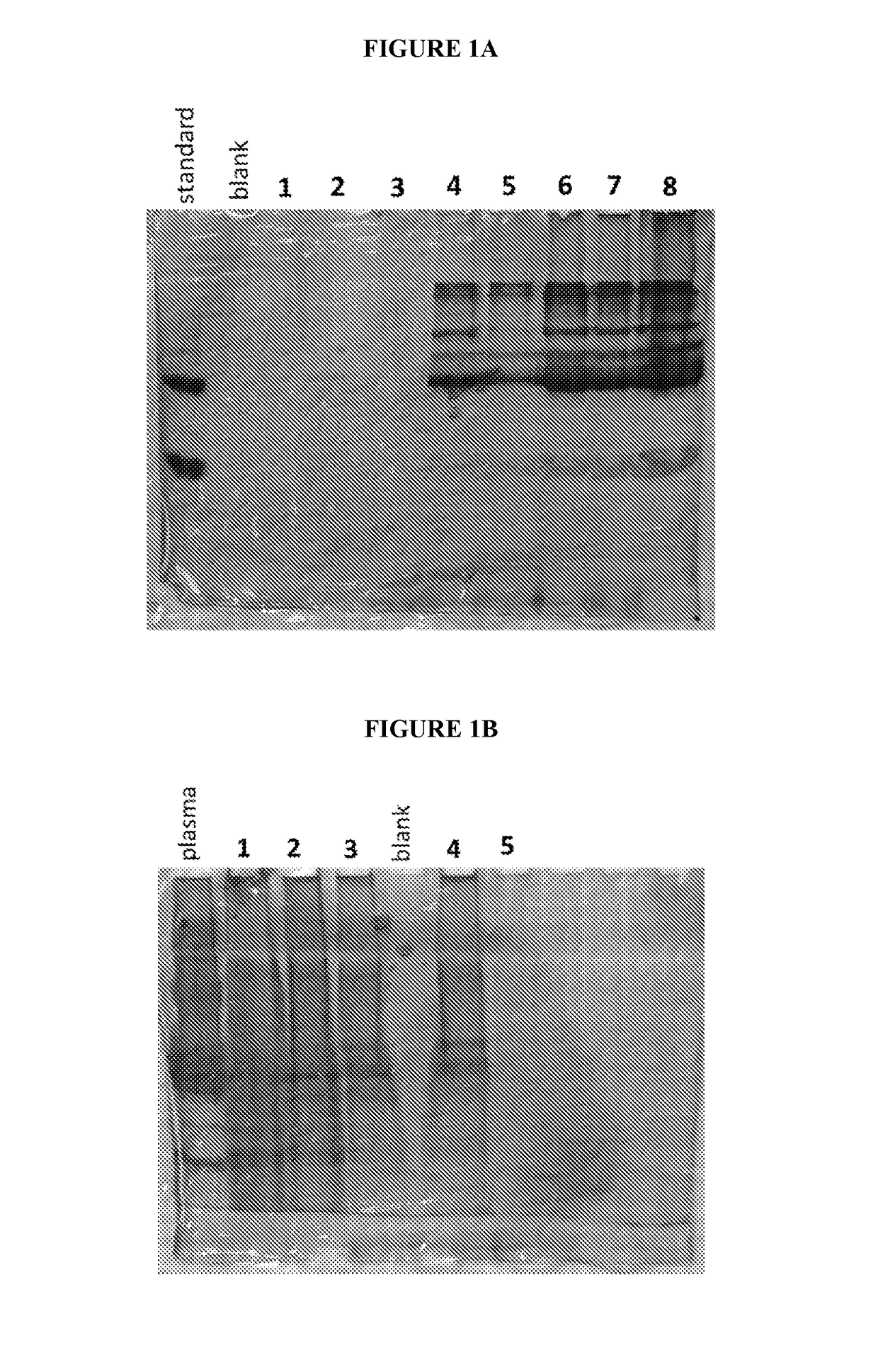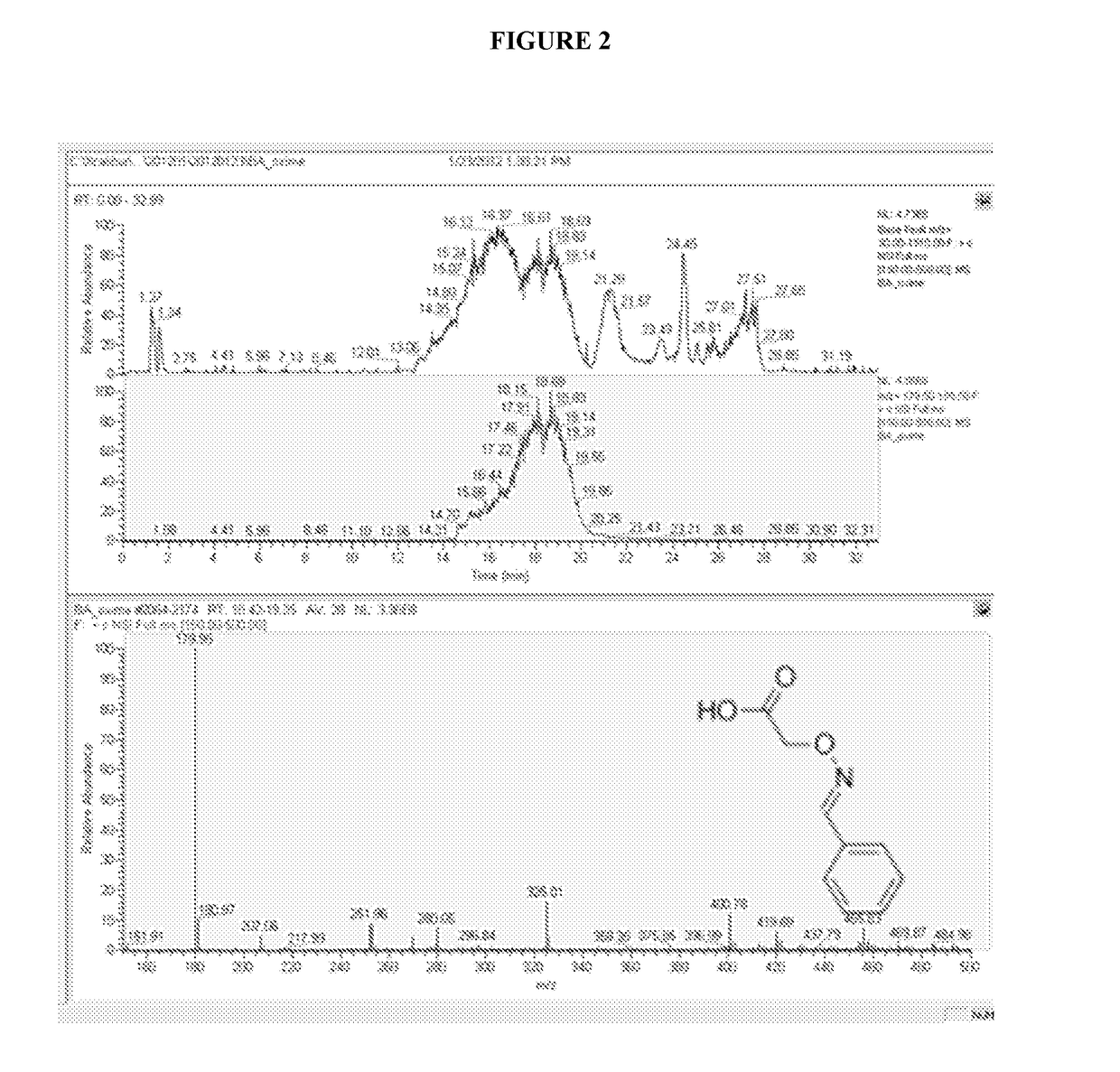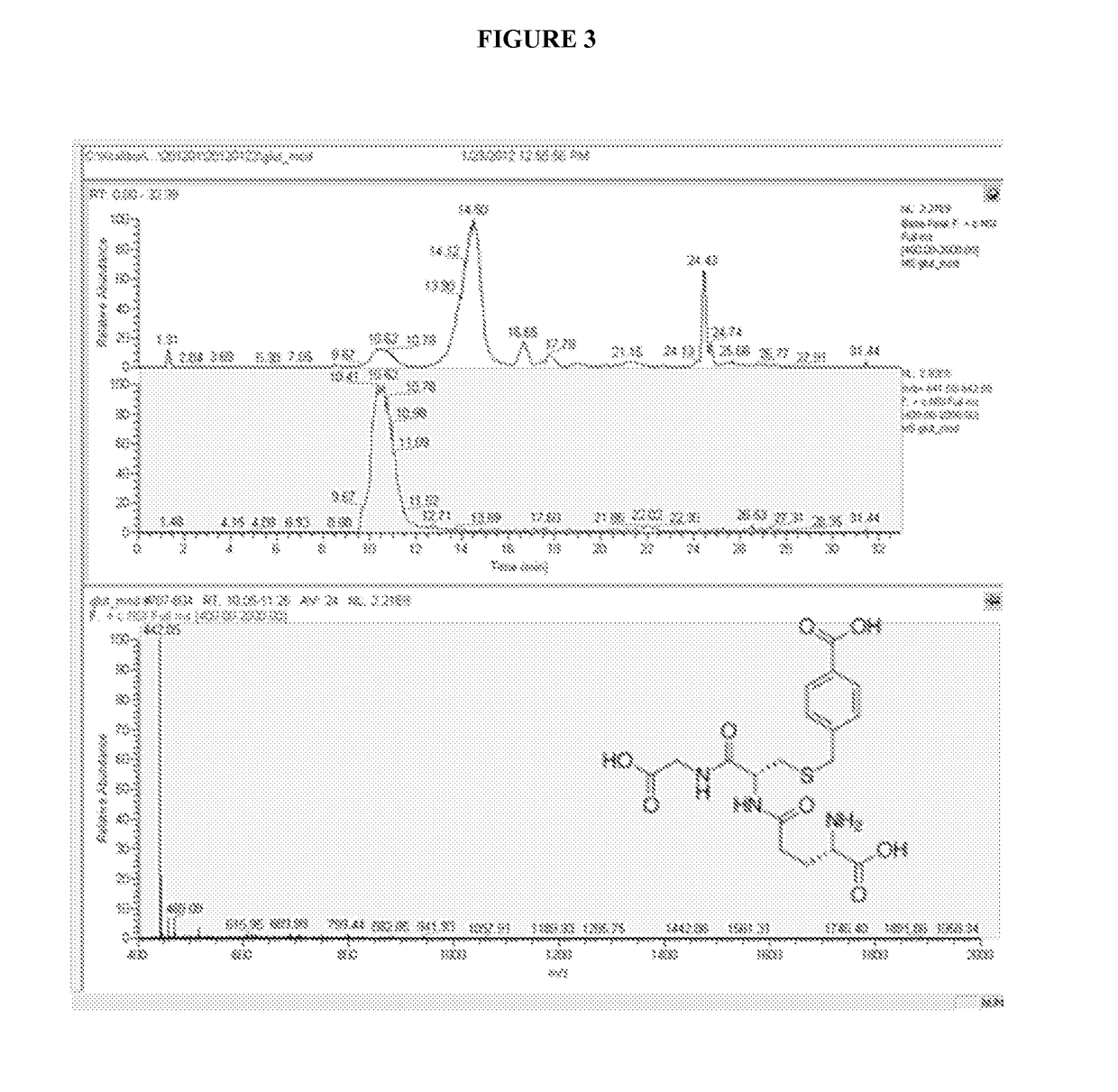Isolation of cysteine containing peptides
a cysteine containing and peptide technology, applied in the field of capture system, can solve the problems of low capacity, low target recovery, and need for advance knowledge of targ
- Summary
- Abstract
- Description
- Claims
- Application Information
AI Technical Summary
Benefits of technology
Problems solved by technology
Method used
Image
Examples
example 1
[0359]
[0360]A solution of sodium bicarbonate (10 mmols), sodium carbonate (10 mmols), sodium hydroxide (46 mmols) and Na-Boc ornithine (10 mmols) is cooled in water (40 mL) to 0° C. and stirred at high speed. A solution of bromoacetyl chloride (24 mmols) in dioxane (20 mL) is quickly added to the aqueous solution, in less than 2 minutes and stirred at 0° C. for 3 hours and at room temperature for 20 minutes. The reaction is diluted with 1 M citric acid (50 mL) and extracted with ethyl acetate (4×100 mL). The organic phases were pooled and washed with brine (20 mL), dried over sodium sulfate and the solvent is removed under reduced pressure. MS (MH+) 353, 355.
example 2
[0361]
[0362]A solution of Nδ-bromoacetamido-Na-Boc ornithine (3.7 mmol) in ethanol (10 mL) is cooled to 0° C. and stirred at high speed. Ethylamine (3.7 mmol, in aqueous solution) and 4-(4,6-Dimethoxy-1,3,5-triazin-2-yl)-4-methylmorpholinium chloride (4.0 mmols) is added in rapid succession. The solution is stirred for one hour at 0° C. and an aqueous solution of sodium carbonate (1 M, 2 mL) is added and stirred for another hour at 0° C. The reaction is diluted with 1 M citric acid (10 mL) and brine (4 mL) and extracted with ethyl acetate (4×10 mL). The organic phases are pooled and washed with brine (4 mL), and dried over sodium sulfate. Silica (12.1 g) is added and the solvent is removed under reduced pressure. The residue is purified by flash chromatography (20 mL / min, 100% Hexanes to 100% ethylacetate). MS (MH+) 380, 382.
example 3
[0363]
[0364]A solution of Nδ-bromoacetamido-Na-Boc ornithine (3.7 mmol) in ethanol (20 mL) is cooled to 0° C. and stirred at high speed. Add deuterated ethylamine (3.7 mmol, HCl salt) and 4-(4,6-Dimethoxy-1,3,5-triazin-2-yl)-4-methylmorpholinium chloride (4.0 mmols) in rapid succession. The reaction proceeds for 10 minutes at 0° C. and an aqueous solution of sodium carbonate (1M, 3.5 mL) is added and proceeds for another hour at 0° C. Dilute the reaction with 1 M citric acid (10 mL) and brine (4 mL) and extract with ethyl acetate (4×10 mL). Pool the organic phases and wash with brine (4 mL), dry over sodium sulfate. Purify by flash chromatography. MS (MH+) 385, 387.
PUM
| Property | Measurement | Unit |
|---|---|---|
| temperature | aaaaa | aaaaa |
| temperature | aaaaa | aaaaa |
| pH | aaaaa | aaaaa |
Abstract
Description
Claims
Application Information
 Login to View More
Login to View More - R&D
- Intellectual Property
- Life Sciences
- Materials
- Tech Scout
- Unparalleled Data Quality
- Higher Quality Content
- 60% Fewer Hallucinations
Browse by: Latest US Patents, China's latest patents, Technical Efficacy Thesaurus, Application Domain, Technology Topic, Popular Technical Reports.
© 2025 PatSnap. All rights reserved.Legal|Privacy policy|Modern Slavery Act Transparency Statement|Sitemap|About US| Contact US: help@patsnap.com



